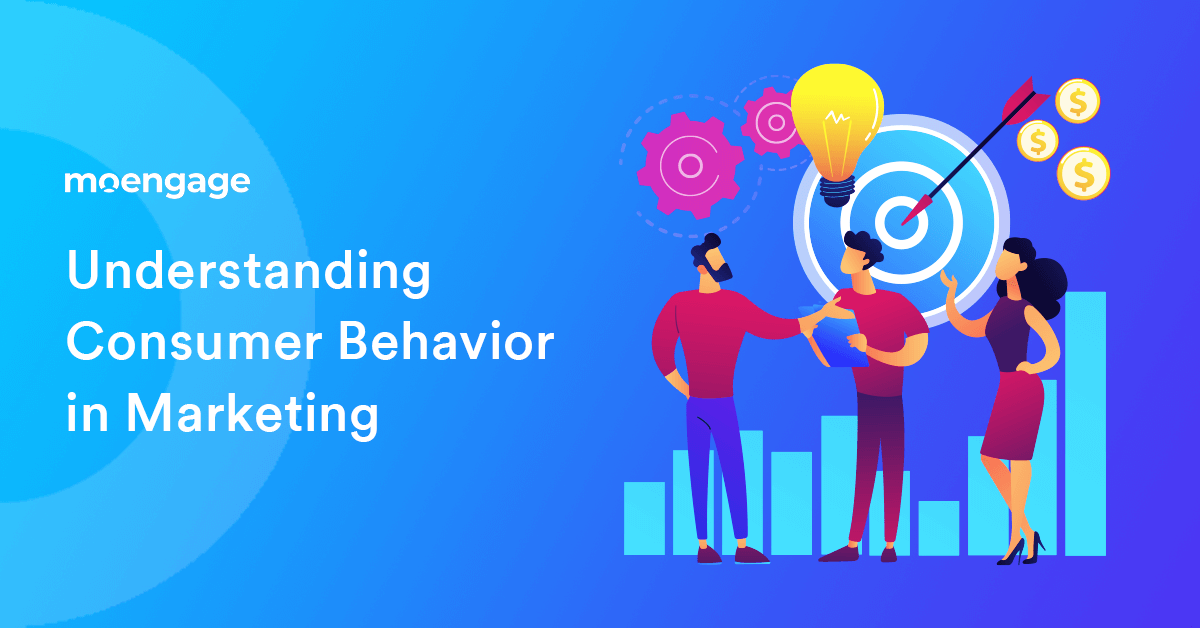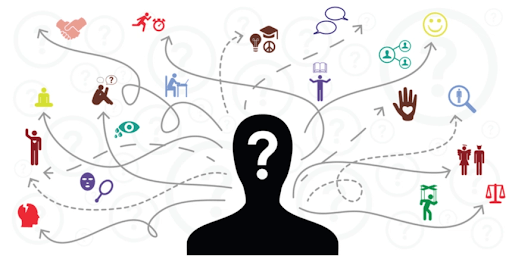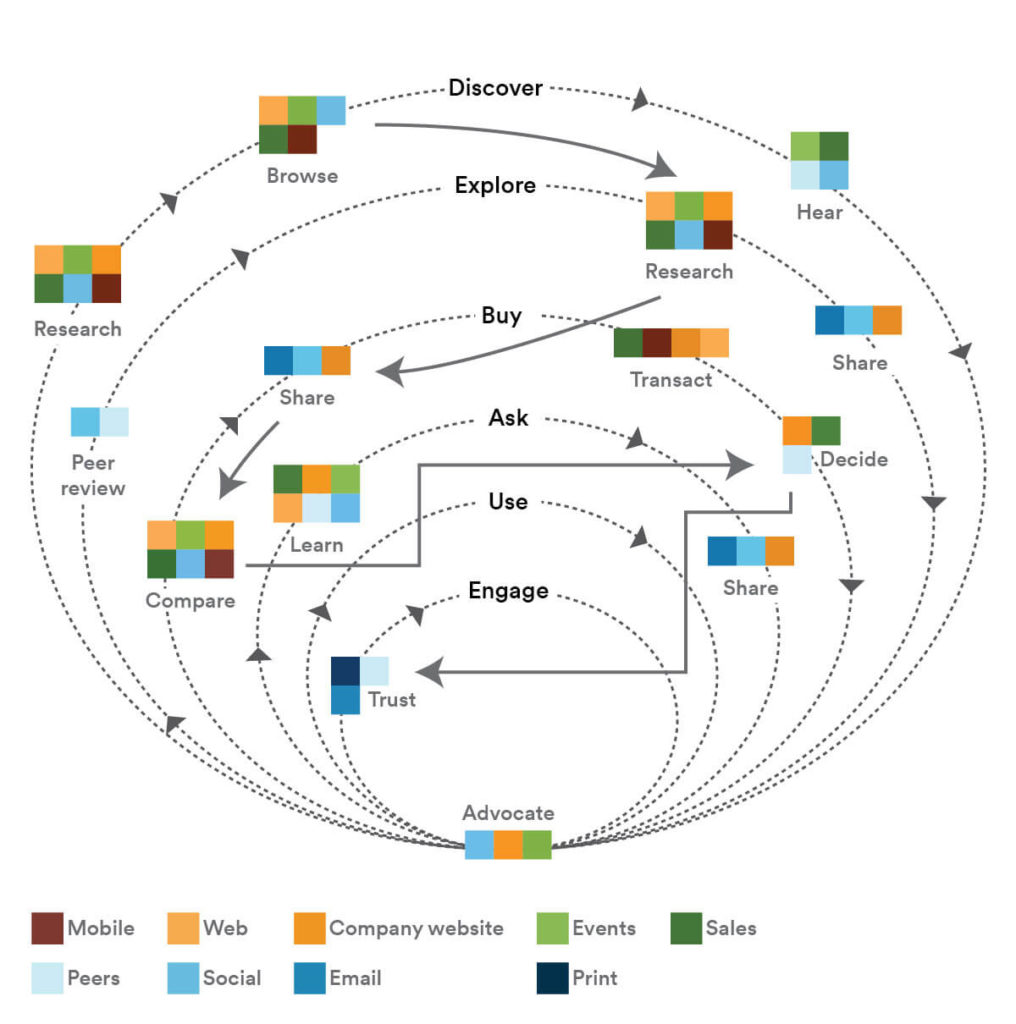Understanding Consumer Behavior In Marketing

To ensure stable growth, a business has to meet consumer needs. This means adapting to emerging trends in the market, understanding ever-changing consumer demands and needs, experimenting with strategies that work, and continually looking for ways to engage with consumers and potential clients. To optimize consumer engagement, marketers need to understand buying behavior, purchase decisions, and other psychological factors. For this, they rely on reports, data, and surveys. Marketers use this information to align their strategies and decisions.

What Is Consumer Behavior? What Makes It So Important for Marketers?
Consumer behavior is a mix of the following:
- The psychological study of consumer needs and wants.
- Understanding consumer’s buyer behavior and how consumers arrive at a purchase decision.
- Analyzing personality factors regarding how a consumer feels about a brand, product, or service, and what motivates them to choose one brand over another.
Other than the psychological factors, the consumer decision process arises from social media, personality factors, and prior customer experience. For example, a young single woman will choose a hatchback or sedan, instead of a truck, or a minivan, because of perceptions that a minivan or truck should be driven by a male or someone middle-aged.

Understanding consumer behavior is important for marketers because:
- 76% of consumers expect companies to understand and cater to their needs and expectations.
- On the S&P 500 Index, organizations leading in customer experience outperformed organizations that do not take consumer feedback into account.
Marketers need to understand buying behavior, what prompts customers to purchase particular products and services over others, and what stops them from purchasing certain products or services or approaching certain brands. The importance of consumer behavior and the factors that influence it are further explained in this blog:
Some Patterns of Consumer Behavior That Marketers Depend Upon Are:
- Complex buying behavior: Where consumers purchase expensive and infrequently bought products; for example, a luxury car
- Habitual buying behavior: For products such as fast-moving consumer goods, frequently purchased by consumers; for example, tea or coffee
- Variety seeking behavior: Where consumers want to experiment with a range or variety of the same product; for example, flavors of tea or coffee
- Dissonance reducing buying behavior: Where consumers continue to purchase goods or services they already use to lessen the discomfort of choosing new items, instead of buying something new; for example, buying the same brand of coffee or tea and not trying something new in the market.
What Are Some Factors that Affect Consumer Behavior?
- Psychological—perception, learning, belief
- Personal—occupation, economic circumstance, purchasing power
- Social—family, roles, status
- Cultural—subculture, class
These factors also influence consumer purchase decisions and buying behavior.
What Are the Steps Involved in a Consumer’s Purchase Decision Process?
The decision-making process that a consumer goes through comprises the following steps:
- Problem recognition
- Search
- Evaluation of alternatives
- Purchase decision
- Post-purchase evaluation
Satisfaction or dissatisfaction associated with a purchase or consumption affects post-purchase consumer behavior. The buying process begins with the consumer identifying a need or a problem activated by internal or external stimuli.
What is Customer Loyalty? How Do You Build Loyalty?
A consequence of consumer behavior is customer loyalty, which is a measure of a customer’s likelihood to continue to do business with a company or continue to purchase a product or service as regards a brand. Customer satisfaction leads consumers to make repeated purchases, which also affects the overall value of the product. Thus, customer retention and customer acquisition go hand in hand in understanding how deep a customer’s loyalty is to a brand or a company.
Customer loyalty arises when companies or brands pre-emptively meet consumer needs and expectations. Loyal customers lead to the following:
- Higher conversion rates that increase with time and help a brand increase its public value and image
- Boosts overall company profits
- Helps the company effectively plan and understand consumer behavior by studying data
How Does the Internet Affect Consumer Behavior?
The impact of the internet is significant in understanding consumer behavior. Today, with sales and marketing turning digital, the internet is a great platform for brands and companies to boost their marketing tactics and draw more consumers.

So what is consumer behaviour and how does the internet affect this?
- Influence: The internet is a strong influence on consumers. Social media channels impact the way consumers are exposed to products and services today. These channels study consumer patterns, buying behavior, and psychological tendencies, and generate relevant advertisements, product pages, and information for consumers just by studying algorithms. This greatly influences how consumers are exposed to information, which ultimately affects their consumer knowledge and buying behavior. According to a Deloitte report, 29% or more consumers are likely to make purchase decisions based on social media.
- Decision-making: The internet affects consumer decision-making thoroughly. Consumers are more likely to ask the opinions of others through social media channels regarding products and services. They are more likely to undertake surveys on products, research things they may need or things that tickle their fancy, and browse through different websites and pages to understand alternatives for products they may be looking to purchase.
- Safety and trust: Safety and trust in digital marketing are increasing day by day. Consumers find it easier to purchase online from within the confines of their homes. The percentage of people making purchases online has drastically increased in the last few years, owing to safe and secure measures adopted by most sales and marketing agents, companies, and brands.

What is the Role and Importance of Consumer Behavior in Marketing?
Consumers flock to an organization or a brand that not only solves but also communicates that they solve customer issues in real-time. People are looking to make purchases that act as investments, rather than frivolously spend money. Most consumers believe that every purchase they make should ideally give them some value in return. Therefore, consumer behavior insights are generated based on a brand’s marketing strategy. Brands rely strongly on studying, analyzing, and incorporating consumer behavior into their marketing strategies. This includes factors such as, what a marketer should create for their digital platforms, like blogs and other content mediums, the kind of stories one tells through their brands such as still and video content, display advertisements, or even how a brand adjusts their product lines to deliver what the consumer wants.
Collection of Consumer Data through Online and Offline Channels
Companies use various online and offline channels to collect information about consumers, which is then used as an insight to further a brand, product, or service. What are some sources of such data collection?
- Online sources: Data stored in consumer relationship management systems, third-party information sourced from secure websites, social media channels, data collected from campaigns and platforms, website clickstreams, etc.
- Offline sources: Contact information, loyalty information, emailers, purchase histories, etc.
What is Social Intelligence?
Social intelligence is listening to a consumer, understanding what they want, their needs, and their expectations from a brand as regards product pricing, value, and utility.

How a consumer perceives a brand, even the advertising and digital collateral of a brand can help businesses increase their profits. Marketers spend money on generating advertisements, social media campaigns, emailers, etc., to boost sales. However, it’s always better to hear what a person wants and needs, instead of shooting in the dark. Informed marketing is a direct result of gauging and understanding social intelligence.
What Goes Into the Psychology of Buying and Spending?
Understanding consumer psychology has become a huge market today. Consumers study consumer behavior to generate insights and use these insights to help a brand or company grow. Consumer psychologists study the following aspects of consumer behavior:
- How a consumer chooses businesses, products, or services based on personal preferences.
- Emotions and thought process behind a consumer decision.
- Environmental attributes that affect buying decisions, such as family, friends, work, or other cultural or seasonal influences.
- The motivation for choosing one product over the other.
- Personal factors that affect a person’s buying decisions.
A professional consumer psychologist understands consumers’ buying and spending trends to help sellers promote their products, boost their online marketing channels, and help businesses understand where they are going wrong. Understanding the consumer psyche can help in:
- Conducting market research
- Developing marketing messages
- Researching consumer attitudes and behavior
- Educating and training companies/brands in the use of products or services
Marketers ultimately use the information generated from all of these insights to reach out to their target base and demographic or identify and connect with potential consumers effectively.

Why Does Consumer Behavior Matter?
According to behavioral science and the 2020 McKinsey report, understanding consumer behavior matters because of the following:
- It helps reinforce positive beliefs associated with products and services.
- Shape emerging and new habits
- Sustain habits associated with consumer purchase and buying decisions
- Align messages to a consumer’s mindset
- Analyze consumer beliefs and behavior at a granular level

The Role of Advertising and Marketing In Shaping Consumer Behavior
Advertising and marketing influence consumer decision-making at various stages in the consumer’s mindset. Based on marketing and advertising, consumers choose specific products over others, are influenced, and are made aware of the benefits of products and services. Advertisers also use these mediums to study the feedback and reaction of consumers on products and services.
How Can Marketers Better Appeal to Consumers?
Despite adapting to the ever-changing digital and retail landscape, experts and marketers are constantly looking for ways to better appeal to consumers. Aligning with marketing trends, impressing customers with better messaging, and giving information about products and services are ways marketers appeal to consumers. To keep a business going and a brand trending, marketers, can also undertake the following:
- Value sustainability: Modern consumers care about the environment and want more information on the products they use. For example, understanding that consumers want cruelty-free/vegan cosmetics or products can lead to a brand exploring sustainable packaging. Brands such as Nespresso and Impact Snacks have transformed their packaging into sustainable packaging.
- Image sells: Whatever is Instagram-worthy sells more these days than a boring old package that arrived in the mail. People look forward to their purchases, and we live in a world where packaging matters as much as what’s inside. It may be a gimmick, but creating beautiful packaging gives consumers an “unboxing experience” that they cherish by posting on social media. This, in turn, is a free advertisement that increases the brand’s outreach. Companies like Apple and Lumi provide consumers with amazing unboxing experiences.
- Feel good factor: Consumers value products that promote wellness and reflect better on their mental and physical health. Marketers can incorporate wellness concepts in their messaging, packaging, or products to help consumers ultimately feel great about their purchase and give them a reason to return to the brand for more. Brands like Glossier and Vive Wellness are known for their expressive packaging.
- Create Communities: What’s better than the feeling of buying a new product? A feeling that a hundred other people are also buying it! Creating a sense of community helps a person feel affiliated with a brand and encourages belonging. By giving consumers a sense of belonging, marketers ensure that they give consumers a platform to talk about their needs, wants, and expectations. Community building is also a great way for marketers to collect feedback. Gymshark and Charlie Hustle are brands that have created holistic communities.
In Conclusion, Why is it Important to Be Aware of Consumer Behavior and Buying Patterns?
Studying consumer buying behavior is extremely vital for marketers, especially in today’s digital age. Marketers can easily use consumer behavior insights and data to understand the expectations that consumers have, their preferences, and what helps a company retain a consumer. These findings are vital and can be studied to understand buying patterns and behavior, ultimately affecting a business and a brand’s overall growth structure.
Here’s What You Can Read Next |














